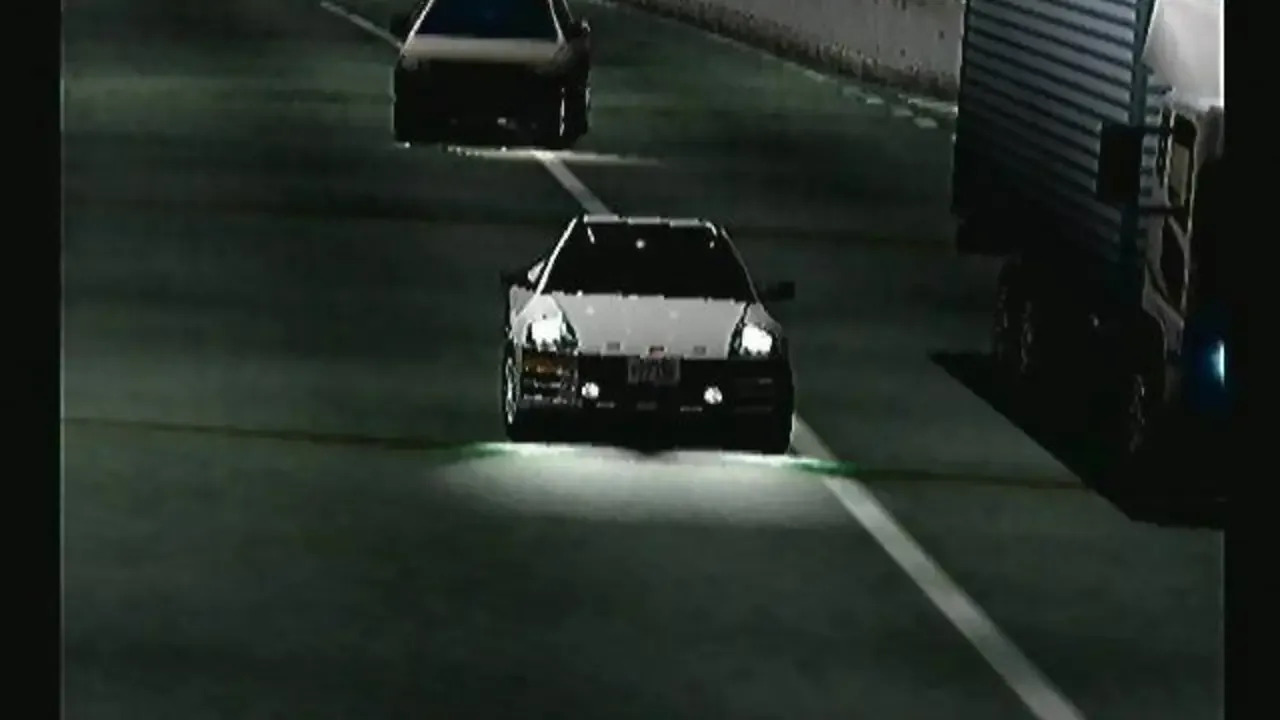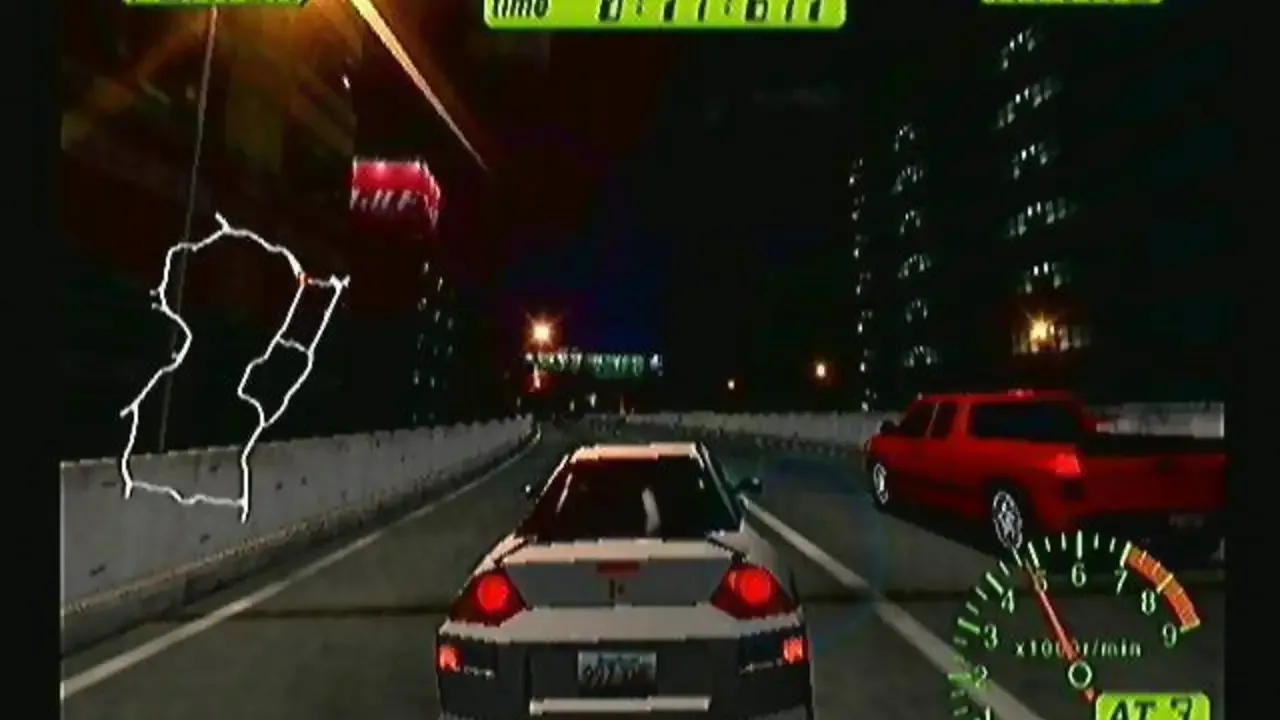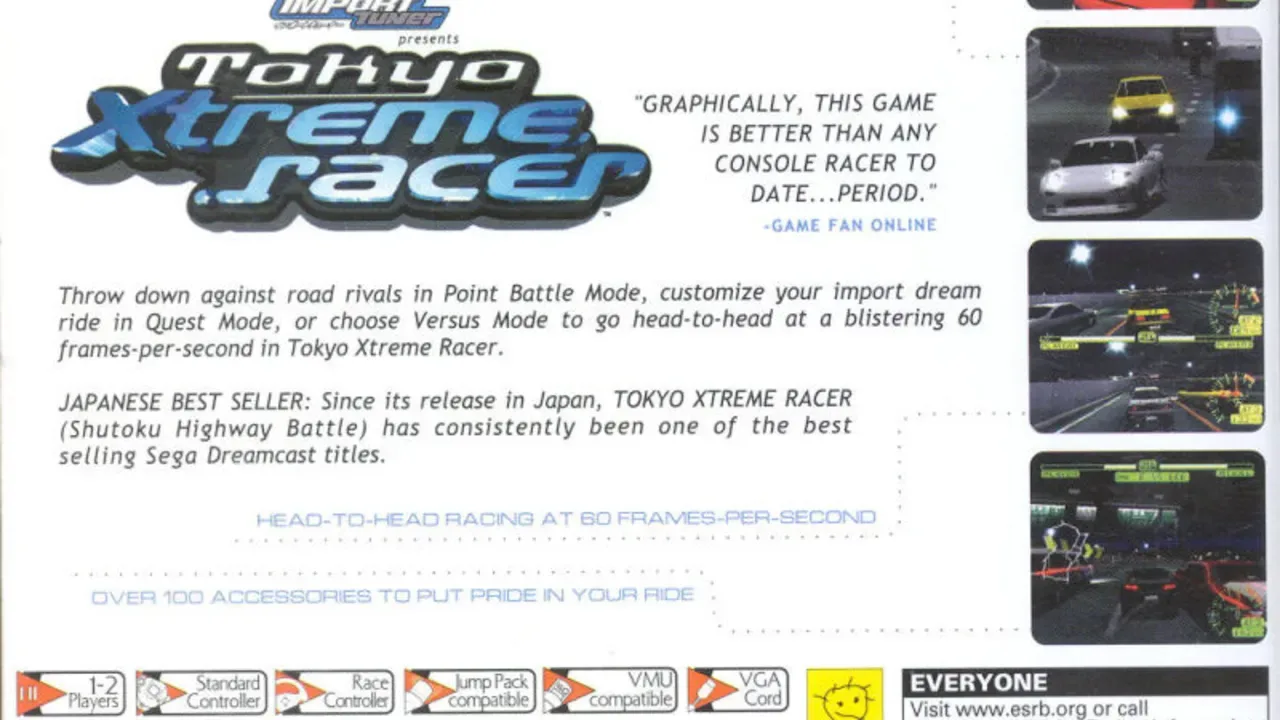Tokyo Xtreme Racer
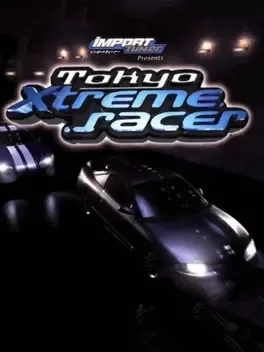
Buy
Part of collection:
Tokyo Xtreme Racer
(last 3 games)
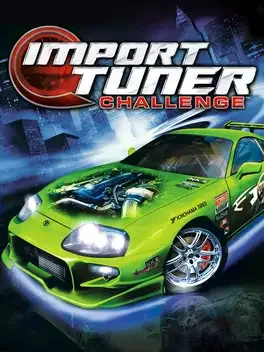
Import Tuner Challenge is set on the Shuto Expressways of Tokyo, Japan. There a total of 415 rivals in the game. It features C1 and Shinkanjo like many other TXR games but unlike TXR3, Import Tuner Challenge does not feature the highways of Nagoya, Osaka, and Yokohama. But two new highway sections of Tokyo are in the game which are Rt.3 Shibuya and Rt.4 Shinjuku.
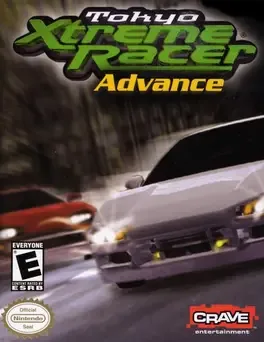
Game Boy Advance adaptation of the popular Japanese Tokyo Xtreme Racing series of games. The GBA game features more than 16 unique user-playable cars to choose from, each with various levels of car tuning options. "Tuner" fans are able to upgrade and customize their cars with plenty of performance and style modifications. Gameplay is similar to the console titles, meaning you explore different metropolitan areas and look for other car fans to challenge them to races. Players race through three cities- Tokyo, London and Los Angeles-on six different tracks. There are more than 60 different rivals to challenge.
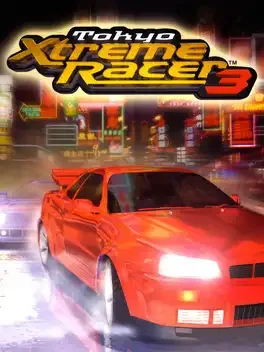
Tokyo Xtreme Racer 3 (or 首都高バトル 01 in the Japanese release) was released for the PlayStation 2 in 2003 as part of Genki's Shutokou Battle series. This entry in the series was released two years after the previous game, Tokyo Xtreme Racer: Zero. Much like other entries in the series, the objective is to become the fastest racer on the highways of Japan, but unlike those before it, TXR3 allows the players to race in Nagoya and Osaka instead of just Tokyo, and the Tokyo map is expanded to include the Yokohama area. In addition, this title adds a weather cycle. TXR3 includes a fully-licensed list of cars from a variety of Japanese, American, and European manufacturers instead of the old car model designation method of "Type-(technical model name)", and furthermore, the car list itself was culled of many repeat models so to simplify and reduce the number of cars. The A, B, and C car designations were also removed. Graphically speaking, Tokyo Xtreme Racer 3 is a definite improvement over previous entries. Car models feature a higher polygon count and are much more extensively detailed and lighting effects were also greatly improved, featuring light streaking effects, road reflections and higher quality car reflections.
Part of franchise:
Tokyo Xtreme Racer
(last 3 games)

Import Tuner Challenge is set on the Shuto Expressways of Tokyo, Japan. There a total of 415 rivals in the game. It features C1 and Shinkanjo like many other TXR games but unlike TXR3, Import Tuner Challenge does not feature the highways of Nagoya, Osaka, and Yokohama. But two new highway sections of Tokyo are in the game which are Rt.3 Shibuya and Rt.4 Shinjuku.
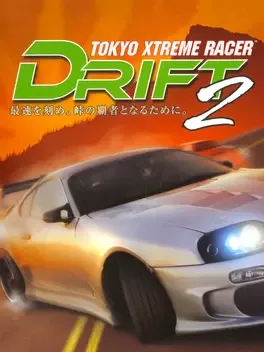
The mountains of Japan are calling - and so are your racing rivals. With the mysterious disappearance of the reigning champion, the tournament crown is suddenly up for grabs. Many will vie, only one can win. Do you have what it takes to race, grind and drift your way to the ultimate racing prize? Race in the dangerous mountains of Japan - Hakone, Niko, Haruna and Akagi - all faithfully recreated using the most advanced laser techniques to maintain every tight twist and turn.
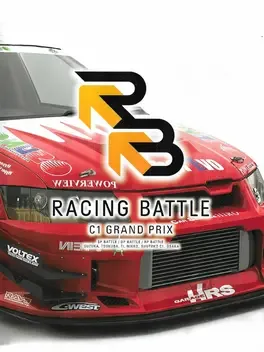
Genki's racing games have typically fallen into the Shutokou Battle series, a collection of late-night racing games that put you on the highways surrounding Tokyo. The company's latest PS2 racer, Racing Battle: C1 Grand Prix, maintains many of the same gameplay mechanics that Genki's other games contain, but this time it takes the cars off of the streets and drops them onto proper racetracks. Racing Battle will contain licensed cars. The version on display only has a handful, including an RX-7, a Supra, an Integra, an Impreza, and an S2000. The car models in the game look decent. They're nice and smooth, but they don't seem to be quite as detailed as the car models in some other comparable racing games. Like most other racing games, Racing Battle has multiple camera angles. But the first-person angle is pretty interesting. From this view, you get indicators that show how hard you're steering, accelerating, or braking. You also get a second, TV-style camera angle in a small window at the top of the screen. This is cool because it gives you a good idea of what's going on near your car. It's easy to see cars coming up behind you with this view and more effective than a standard rearview mirror. The gameplay in Racing Battle is roughly the same as what Genki has done with Shutokou and Kaido Battle series. Each car is associated with a fighting gamelike life meter, and the car in second place constantly loses pieces of its life meter. When one car runs out of "health," the race ends and a winner is declared.
Could be interesting
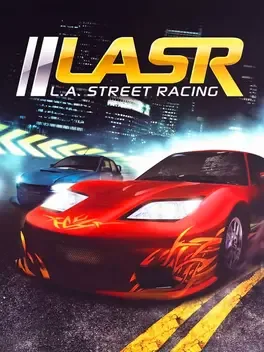
LA Street Racing is a street racing game set in Los Angeles where players climb from 61st place to challenge the underground champion Matt Peacock. Players start with a basic car and compete in high-stakes races at various locations across LA, betting car parts and eventually whole vehicles in pink slip races. The progression system features four prestige levels, each unlocking new racing locations and tougher opponents. Car customization involves strategic decisions about part compatibility and performance trade-offs, as mixing different upgrade tiers affects handling. The racing model emphasizes realistic vehicle physics, requiring careful braking and cornering techniques, while rewarding clean driving with nitrous boosts. The game includes multiplayer support for up to eight racers online.
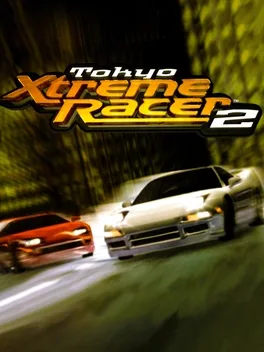
The thrilling followup to the original, Tokyo Xtreme Racer 2 improves in all fronts. With more road to drive on, rivals to fight, and cars to master, this entry offers everything and more. In the game, you race around the streets of Tokyo at night in an almost seamless experience, from cruising around, to joining a race, to cruising again. Flash your headlights when tailing a rival to incite a race, and after a short cinematic, you're both off. To win a race, you need to take down your opponent's power meter, while keeping yours intact. It decreases when hitting objects, and, more importantly, in last place. The game is less focused on the realism of a racer, but still takes into account a good amount of customization, from upgrades to tuning. Since you'll be driving the car almost constantly, its best to have your own personal vehicle. The roads you drive on start out limited, but expand as you dive deeper and deeper into the game. Don't expect to go without memorizing the tracks; in order to beat the best, you need to make Tokyo your home.
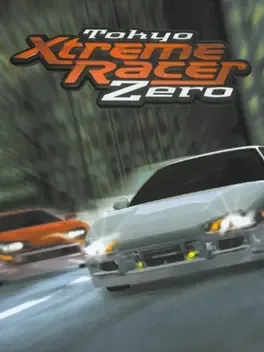
Tokyo Xtreme Racer Zero is a racing game developed by Genki for PlayStation 2. Despite its name, it is set between Tokyo Xtreme Racer 2 and Drift, and has enhanced sound and graphics. The game was released in Japan as Shutokou Battle 0, but was also a release in North America. The game was released in a PAL version in Europe and Australia under the title Tokyo Xtreme Racer (not to be confused with the Dreamcast title of the same name). This is the first game in the series that has been released on a platform other than the Dreamcast. Zero was originally to be released on the Dreamcast but was then canceled and moved to the PlayStation 2. The Tokyo Xtreme Racer series has produced a total of six games, the first four being U.S. localizations of the first four Shutokou Battle series games and the final two being U.S. localizations of the first and third Kaido Battle series games.
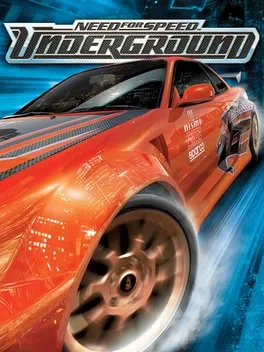
Need for Speed: Underground is a 2003 racing video game and the seventh installment in the Need for Speed series. It rebooted the franchise, ignoring previous Need for Speed games that featured sports cars and exotics. Underground is the first game in the series to offer a career mode that features a comprehensive storyline, as well as a garage mode that allows players to fully customize their cars with a large variety of brand-name performance and visual upgrades.
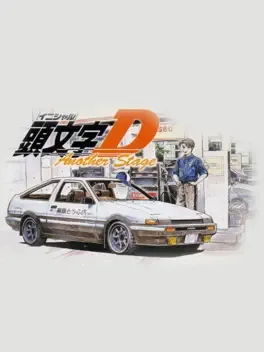
Initial D: Another Stage is a driving/racing game for Game Boy Advance, based on the anime and manga Initial D.
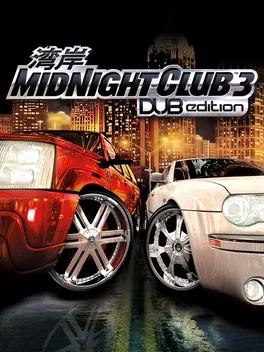
Midnight Club 3: DUB Edition is a racing game, developed by Rockstar San Diego and published by Rockstar Games, and is the third game in the Midnight Club series. Like previous installments in the series, the game is an arcade-style racer and focuses on wild, high-speed racing, rather than realistic physics and driving characteristics. The name derived from a partnership between Rockstar and DUB Magazine, which features heavily in the game in the form of DUB-sponsored races and DUB-customized vehicles as prizes.
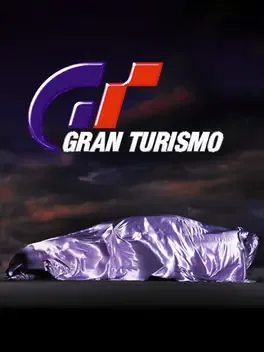
Gran Turismo is a racing game designed by Kazunori Yamauchi and is the first entry in the critically acclaimed simulator racing series bearing the same name. After five years of development time, it was well-received publicly and critically, shipping a total of 10.85 million copies worldwide as of March 2013, making it the best-selling PlayStation game. The game uses two different modes: Arcade Mode and Gran Turismo Mode. In the arcade mode, the player can freely choose the courses and vehicles they wish to use. Winning races unlocks additional cars and courses. However, Gran Turismo Mode requires the player to earn different levels of driver's licenses in order to qualify for events, and earn credits, trophies and prize cars by winning race championships. Gran Turismo features 140 cars and 11 race tracks (as well as their reversed versions).
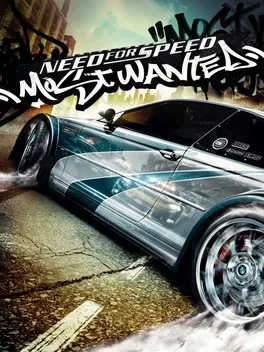
Need for Speed: Most Wanted is a single-player racing video game and the ninth installment in the Need for Speed series, following Underground 2. The game centers on street-racing gameplay, featuring a variety of events and racing circuits set within the fictional city of Rockport.
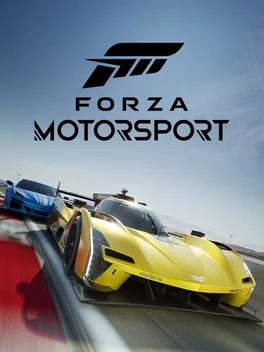
Out-build the competition in the new career. Race your friends in adjudicated multiplayer events. Compete in over 500 cars on world-famous tracks with cutting-edge AI, advanced physics, tire and fuel strategy, and driver and safety ratings.

Drift19 is the first and only serious drifting simulator. If you love cars, noise of the engine and drifting as much as we do, there is no doubt this game is for you. Rebuild your car, train your skills and take part in the world championships to beat other drivers!





